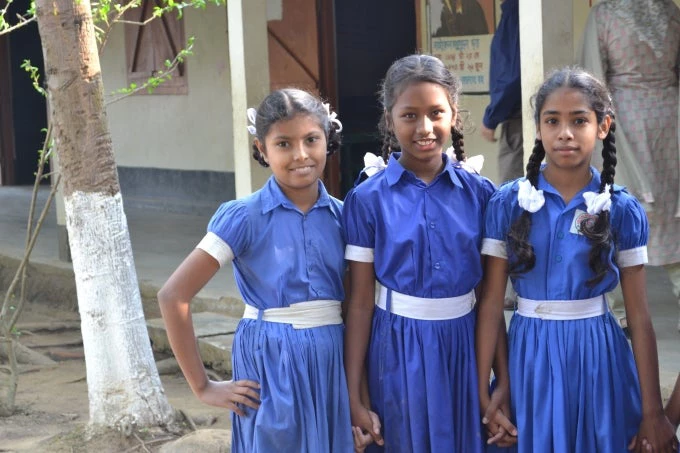
Going through the narrow streets of Savar, you are surrounded by homes and shops on both sides - doors opening for business, the smell of heated oil in the pan, and the wait for the morning rush hour to begin. Then you spot the uniformed children: in pairs, in threes or walking solo to school. Among them you see many self-assured young girls, equal in numbers, with their heavy bags and tight braids. Some are being escorted by their mothers and siblings, and some are being dropped off by a mode of transport. But everyone is excited to come to school.
As part of the government led Third Primary Education Development Program (PEDP3), the Dhorendra Government Primary School in Savar – about 2 hours from the nation’s capital – is an example of how Bangladesh has made remarkable gains in ensuring access to education in the past two decades. The program, initiated in 2011, covers Grades I through V and one year of pre-primary education. It aims to enhance the quality of education in Bangladesh, and reduce disparities in access and learning.
More than 70% of donor partner financing is linked to results achieved on the ground and disbursed after meeting program targets associated with a set of key indicators. These indicators represent critical reforms, and cover a subset of the government’s program for primary education. The program is a good example where the government and donor resources are well harmonized, according to co-Task Team Leader Saurav Dev Bhatta.
As a result, the country’s net enrollment rate at the primary school level has increased from 80 percent in 2000 to above 90 percent in 2015. Furthermore, the percentage of children completing primary school is close to 80 percent. With nearly 6.4 million girls in secondary school in 2015, Bangladesh is among the few countries to achieve gender parity in school enrollment, and have more girls than boys in the secondary schools.
But the key challenge for the program remains the quality of primary education in Bangladesh. Although PEDP3 has recruited about 100,000 teachers to reduce teacher-student ratio in the classrooms, and introduced a Diploma for Education for teachers, there is still a long way to go. Boosting the quality of education will remain the main focus for the next program under preparation.
Last year, around 36,000 schools in 297 upazilas (sub-districts) were provided with grants to promote decentralized planning and management. More than 90 percent of schools received free textbooks within the first month of the academic year, and January 1 is now officially celebrated as Text Book Day in Bangladesh.
“All the schools have such dedicated staff and the students are eager to learn,” said Ms. Afroza, Upazila Education officer for Savar. “We feel proud of their achievements.”
Then a universal school ritual begins: the assembly bell; a voice on the loudspeaker asking the whispers to stop; and it’s time to sing the national anthem.


Join the Conversation